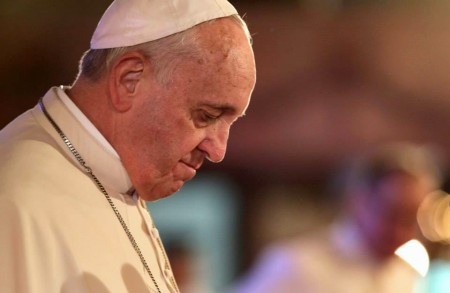We ask you, humbly: don't scroll away.
Hi readers, it seems you use Catholic Online a lot; that's great! It's a little awkward to ask, but we need your help. If you have already donated, we sincerely thank you. We're not salespeople, but we depend on donations averaging $14.76 and fewer than 1% of readers give. If you donate just $5.00, the price of your coffee, Catholic Online School could keep thriving. Thank you.Help Now >
Pope Stephen (IX) X
FREE Catholic Classes
Born probably about the beginning of the eleventh century; died at Florence, 29 March, 1058. (Junian?) Frederick, destined to become Pope Stephen X, was the son of Gozelon, Duke of Lower Lorraine and of Junca, the daughter of Berengarius II, King of Italy. As he advanced in years he became as distinguished for character and learning as he was for his birth. It was seemingly whilst he was a canon of Liège that his cousin Leo IX met him and made him chancellor and librarian of the Roman Church (c. 1051). He accompanied Leo IX in his apostolic journeyings throughout Europe, and was sent by him on the famous embassy to Constantinople (1054) which terminated in the final separation of the Eastern and Western Churches. On his return from the East he was robbed by the Count of Teate, and, to avoid falling into the hands of the Emperor Henry III , the Black (who seems to have distrusted him as the brother of the rebellious Godfrey the Bearded, Duke of Lorraine ), he became a monk at Monte Cassino (1055), and, after the death of the Emperor Henry, its abbot (1057). He was made cardinal-priest of St. Chrysogonus by Victor II, and, on the latter's death, he was freely chosen his successor, and consecrated on the following day (3 August, 1057). As pope, he carried on the work of reformation which had been inaugurated by St. Leo IX. To show how much he was in earnest, he at once made cardinals of both that zealous champion of reform, St. Peter Damian, and the quondam monk Humbert, his own uncompromising companion on the embassy to Constantinople. He also made no little use of Cardinal Hildebrand (afterwards St. Gregory VII ), the soul of the reforming party. He sent him to Milan to effect an improvement in the morals of its clergy with instructions to proceed to Germany and to induce the regent, the empress-mother Agnes, to accept his election which had been made without any reference to her. It was further arranged that Hildebrand was then to go on to France. Stephen was preparing to reopen negotiations with the Greek Church , and to try to stop the advance of the Normans in southern Italy, when he died, exhorting the cardinals to await the return of Hildebrand before electing his successor. He was buried in the Church of St. Reparata.
 Hi readers, it seems you use Catholic Online a lot; that's great! It's a little awkward to ask, but we need your help. If you have already donated, we sincerely thank you. We're not salespeople, but we depend on donations averaging $14.76 and fewer than 1% of readers give. If you donate just $5.00, the price of your coffee, Catholic Online School could keep thriving. Thank you. Help Now >
Hi readers, it seems you use Catholic Online a lot; that's great! It's a little awkward to ask, but we need your help. If you have already donated, we sincerely thank you. We're not salespeople, but we depend on donations averaging $14.76 and fewer than 1% of readers give. If you donate just $5.00, the price of your coffee, Catholic Online School could keep thriving. Thank you. Help Now >








 Daily Readings for Saturday, April 20, 2024
Daily Readings for Saturday, April 20, 2024 St. Marian: Saint of the Day for Saturday, April 20, 2024
St. Marian: Saint of the Day for Saturday, April 20, 2024 Children's Prayer For Parents: Prayer of the Day for Saturday, April 20, 2024
Children's Prayer For Parents: Prayer of the Day for Saturday, April 20, 2024

